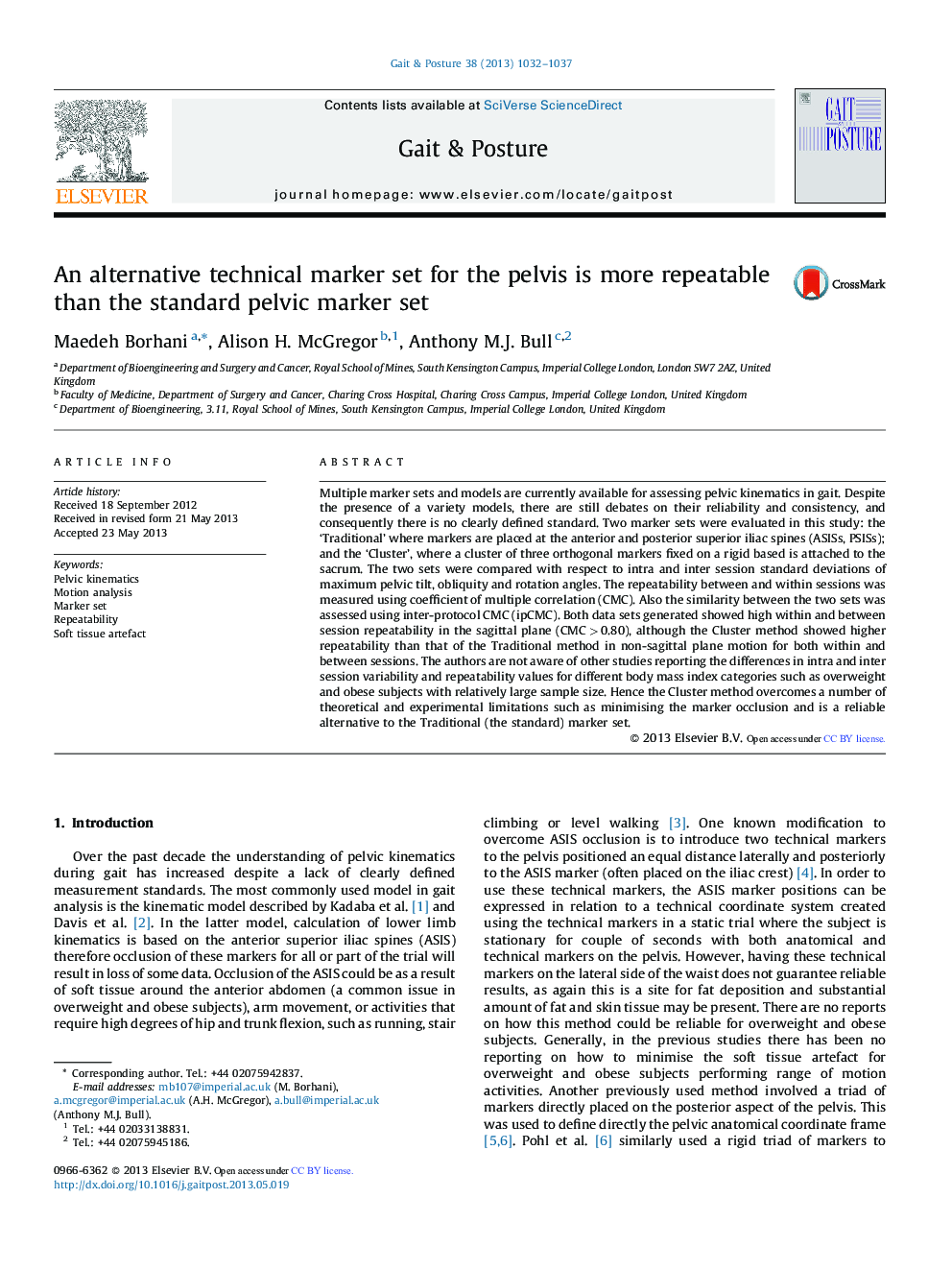| Article ID | Journal | Published Year | Pages | File Type |
|---|---|---|---|---|
| 6206846 | Gait & Posture | 2013 | 6 Pages |
â¢Pelvic kinematics was studied using two sets of markers.â¢The standard set was compared to a cluster consists of three orthogonal markers.â¢There were no significant differences between the two methods for normal subjects.â¢The Cluster set showed higher repeatability for overweight and obese subjects.â¢The Cluster set showed less variability for overweight and obese subjects.
Multiple marker sets and models are currently available for assessing pelvic kinematics in gait. Despite the presence of a variety models, there are still debates on their reliability and consistency, and consequently there is no clearly defined standard. Two marker sets were evaluated in this study: the 'Traditional' where markers are placed at the anterior and posterior superior iliac spines (ASISs, PSISs); and the 'Cluster', where a cluster of three orthogonal markers fixed on a rigid based is attached to the sacrum. The two sets were compared with respect to intra and inter session standard deviations of maximum pelvic tilt, obliquity and rotation angles. The repeatability between and within sessions was measured using coefficient of multiple correlation (CMC). Also the similarity between the two sets was assessed using inter-protocol CMC (ipCMC). Both data sets generated showed high within and between session repeatability in the sagittal plane (CMCÂ >Â 0.80), although the Cluster method showed higher repeatability than that of the Traditional method in non-sagittal plane motion for both within and between sessions. The authors are not aware of other studies reporting the differences in intra and inter session variability and repeatability values for different body mass index categories such as overweight and obese subjects with relatively large sample size. Hence the Cluster method overcomes a number of theoretical and experimental limitations such as minimising the marker occlusion and is a reliable alternative to the Traditional (the standard) marker set.
